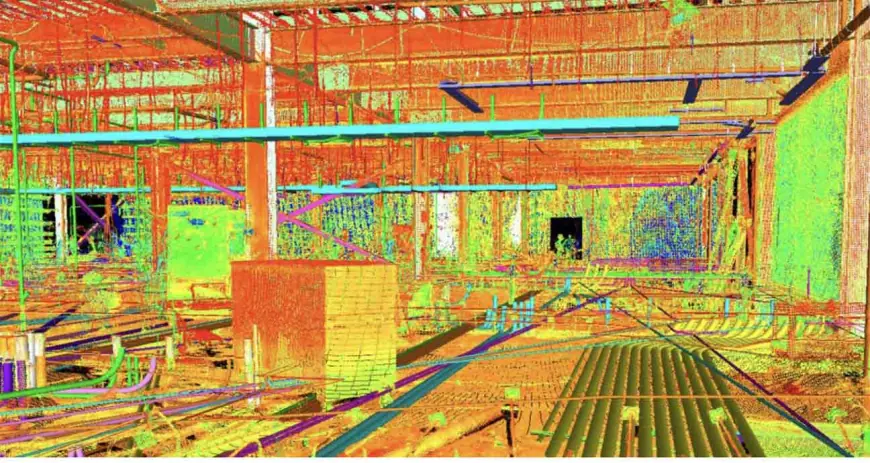Architectural Scanning Services

Understanding the Importance of Modern Building Documentation
In today’s fast-paced construction industry, accurate building documentation is critical for success. Projects require precise data from the start to avoid costly mistakes later. This is where advanced technology steps in to transform traditional methods of surveying and measurement. Instead of relying on outdated techniques, many companies now choose solutions that provide detailed, reliable, and efficient results. This shift is shaping the way architects, engineers, and contractors approach projects of all sizes and complexities.
How Technology is Reshaping the Industry
The construction and design world is experiencing a major transformation with digital tools. These innovations enable teams to collect real-world measurements with remarkable speed and accuracy. They also allow seamless sharing of project data across different teams, regardless of location. By using tools that reduce manual errors, companies can increase productivity and confidence in their work. The introduction of architectural scanning services has proven to be a game-changer in creating dependable records for both existing and future structures.
From Field Data to Digital Models
Data collection is only the beginning of a successful building project. Once field measurements are captured, they must be translated into clear, usable digital models. This process involves advanced software that can handle complex structures and details. Architects and engineers can then use these models for planning, analysis, and visualization. This reduces guesswork and ensures that everyone involved in the project works from the same reliable information. As a result, time delays and costly revisions are significantly reduced.
Applications in Renovations and Restorations
Renovating or restoring older buildings requires an in-depth understanding of their current condition. Traditional surveying methods often miss critical details or require lengthy inspections. Modern scanning technology addresses these challenges by producing a complete and accurate representation of the existing structure. Teams can see hidden elements, irregularities, and areas needing repair before work begins. This leads to better planning, safer execution, and higher-quality outcomes for restoration projects.
Improving Collaboration Across Project Teams
One of the greatest benefits of advanced scanning is its ability to improve communication. When architects, engineers, and construction managers work with the same precise models, misunderstandings are minimized. The shared visual data helps everyone clearly understand the project requirements. This also makes it easier to coordinate schedules, manage resources, and track progress. Clear communication built on reliable data results in stronger teamwork and more successful project delivery.
Reducing Project Risks and Costs
Construction projects often face unexpected challenges that can delay schedules and increase costs. These risks can be reduced with accurate and detailed building information from the start. By eliminating guesswork, scanning technology helps avoid costly design changes and material waste. This proactive approach also prevents safety hazards caused by inaccurate measurements. In the long run, investing in accurate documentation saves both time and money while ensuring quality results.
The Role of Scanning in Large-Scale Projects
Major construction projects require detailed coordination between multiple teams and disciplines. Scanning technology makes it possible to manage these complex efforts effectively. Large sites can be captured quickly, and the resulting data can be used to create precise master plans. These plans help identify potential issues early and ensure that every phase of the project is executed smoothly. By streamlining workflow, project managers can keep timelines and budgets under control.
Bringing New Life to Historic Structures
Preserving historic buildings requires careful attention to detail and accuracy. Scanning technology captures even the smallest features of these structures without damaging them. The data can then be used to plan preservation work that respects the building’s original design. This ensures that cultural heritage is protected while allowing for modern upgrades where necessary. With this technology, historic buildings can be restored to their former glory and maintained for future generations.
Enhancing Design Accuracy for New Construction
In new construction, accuracy is vital from the earliest design stages. Scanning ensures that every element is precisely measured before work begins. This helps architects create plans that match real-world conditions and avoid design conflicts later. The resulting precision allows for better integration of structural, mechanical, and electrical systems. Ultimately, this leads to smoother construction, fewer delays, and higher-quality results.
Integrating with Building Information Modeling (BIM)
Building Information Modeling is a widely used tool in modern construction. Scanning technology complements BIM by providing the accurate base data needed for models. The combination of scanning and BIM creates a powerful system for managing every stage of a project. It allows for easier updates, better coordination, and improved decision-making. This integration helps ensure that all stakeholders are working with the most current and reliable information available.
Why Many Professionals Prefer Advanced Scanning
The growing popularity of scanning technology is driven by its many benefits. It offers speed, accuracy, and efficiency that traditional methods simply cannot match. Professionals appreciate the ability to capture complete data without multiple site visits. They also value the improved safety of working without physically accessing dangerous areas. With these advantages, it’s no surprise that scanning has become a standard tool in many industries.
The Future of Construction Documentation
As technology continues to advance, scanning will become even more capable. Faster processing speeds, improved accuracy, and easier integration with other tools are on the horizon. These improvements will make it possible to handle even larger and more complex projects. The future of construction documentation will rely heavily on these advancements to meet growing demands. Staying ahead of these trends will be crucial for companies aiming to remain competitive in the industry.
Conclusion
In the modern construction world, precision and efficiency are no longer optional. They are essential for delivering successful projects on time and within budget. The adoption of advanced scanning technology allows teams to work with accurate, detailed information from the very start. Whether for renovations, restorations, or new construction, these tools provide a clear advantage in planning and execution. For more info click here.
What's Your Reaction?
 Like
0
Like
0
 Dislike
0
Dislike
0
 Love
0
Love
0
 Funny
0
Funny
0
 Angry
0
Angry
0
 Sad
0
Sad
0
 Wow
0
Wow
0





















































